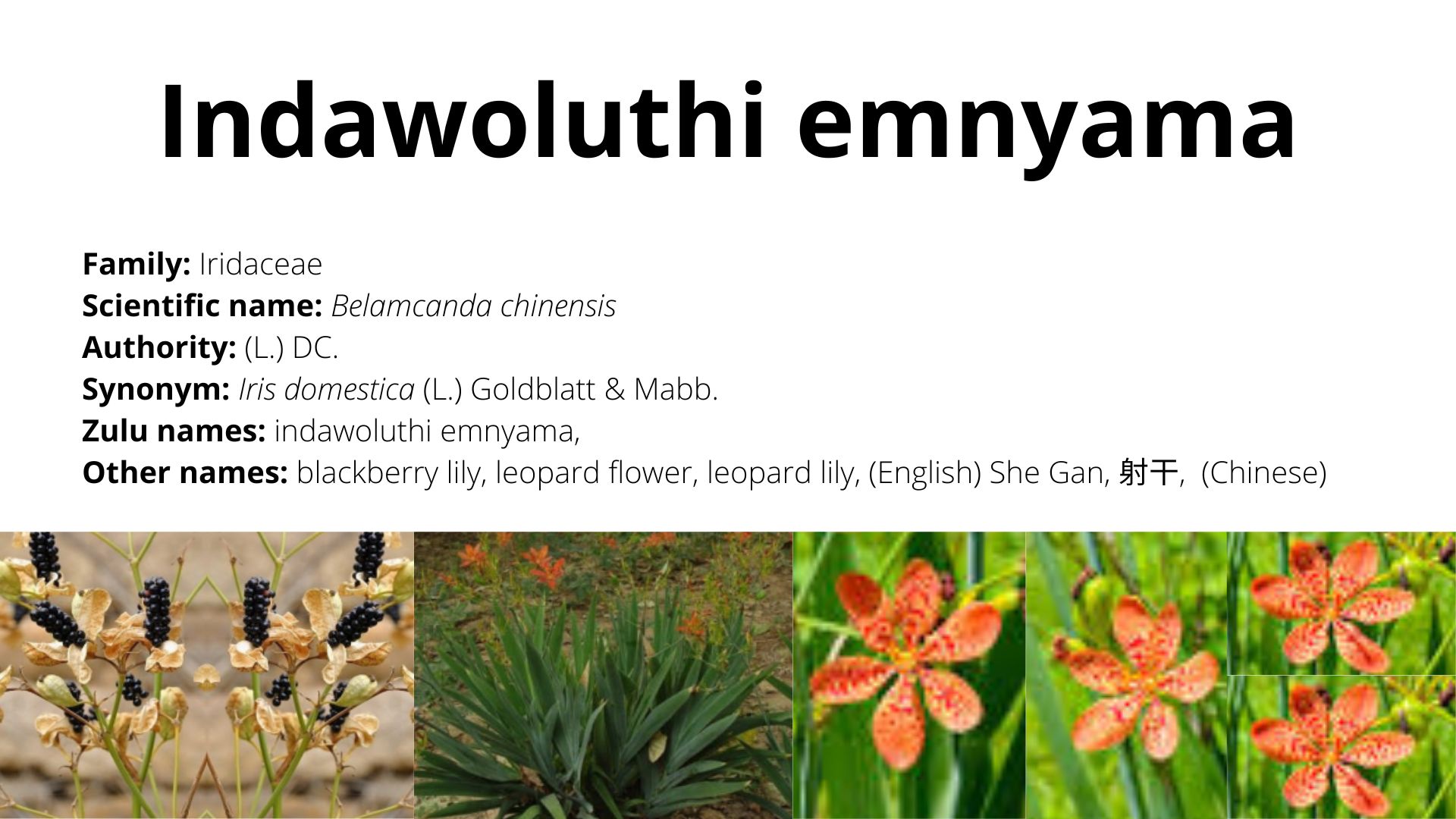Family: Iridaceae
Scientific name: Belamcanda chinensis
Authority: (L.) DC.
Synonym: Iris domestica (L.) Goldblatt & Mabb.
Zulu names: indawoluthi emnyama,
Other names: blackberry lily, leopard flower, leopard lily, (English) butterfly flower, flat bamboo, She Gan, 射干, (Chinese)
Description: B. chinensis is a perennial herb or shrub that is native to East Asia and naturalised in South Africa and can be found growing in the grassland. It has sword-shaped alternate leaves, reddish-yellow or reddish-orange flowers with dark spots, and three-sided capsules containing clusters of shiny black seeds.
The pharmacological studies show that the plant has antibacterial, anticancer, anti-inflammatory, anti oxidation, hepatoprotective, hypoglycaemic lipid-lowering, and oestrogen-like effects
Uses:
Warning: B. chinensis is bitter in taste. The root is not recommended for use by pregnant women.
- The roots are used to make an emetic to allay hysterical crying.
- The roots are used as an analgesic, antidote for snakebite, antipyretic, antiphlogistic, depurative, expectorant, febrifuge, and purgative agent.
- In China:
- The roots are used to treat respiratory infections, such as asthma, bronchitis, acute and chronic
- pharyngitis, chronic tonsilitis, sinusitis, etc.
- The roots are used to treat liver complaints.
- The roots are used to reduce inflammation.
- The juice from the root is used to abort a foetus during the first trimester.
- The plant is a garden and indoor ornamental.
References and further research:
- Bryant, A.T., 1966. Zulu Medicine and Medicine-Men. Struik, Cape Town.
- Ito, H., Onoue, S. and Yoshida, T., 2001. Isoflavonoids from Belamcanda chinensis. Chemical and pharmaceutical bulletin, 49(9), pp.1229-1231.
- Jiangsu New Medical College, Dictionary of Chinese Materia Medica; Shanghai Scientific and Technical Publishing House: Shanghai, China, 2001
- Liu, M., Yang, S., Jin, L., Hu, D., Wu, Z. and Yang, S., 2012. Chemical constituents of the ethyl acetate extract of Belamcanda chinensis (L.) DC roots and their antitumor activities. Molecules, 17(5), pp.6156-6169.

